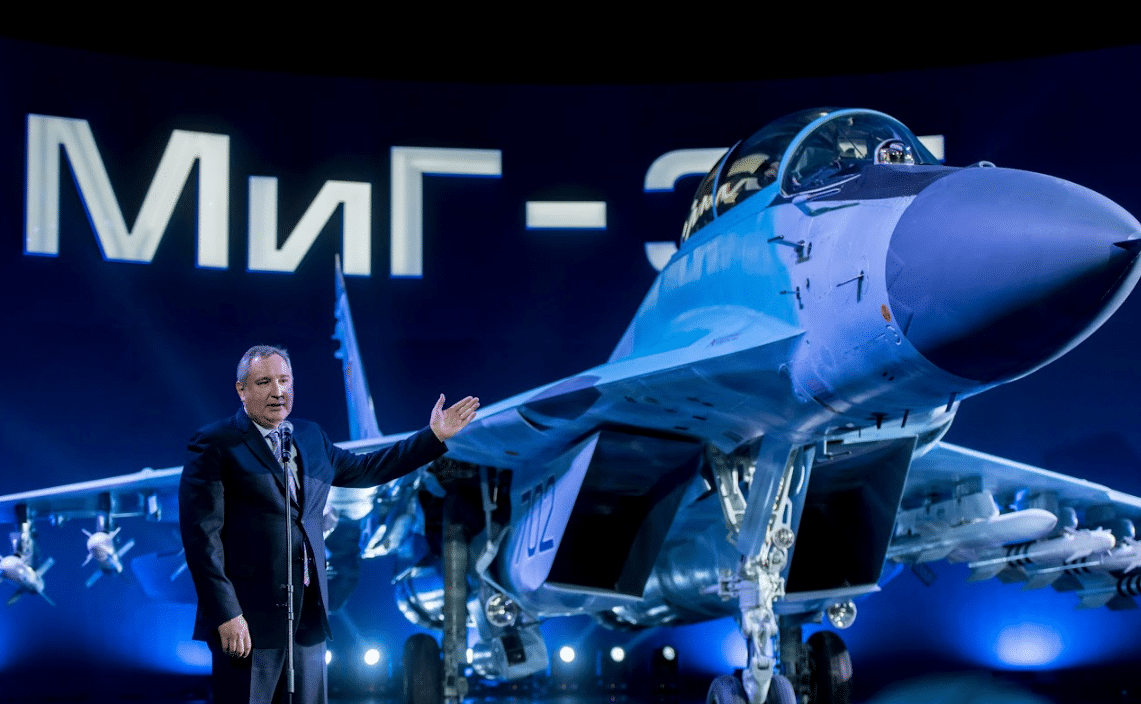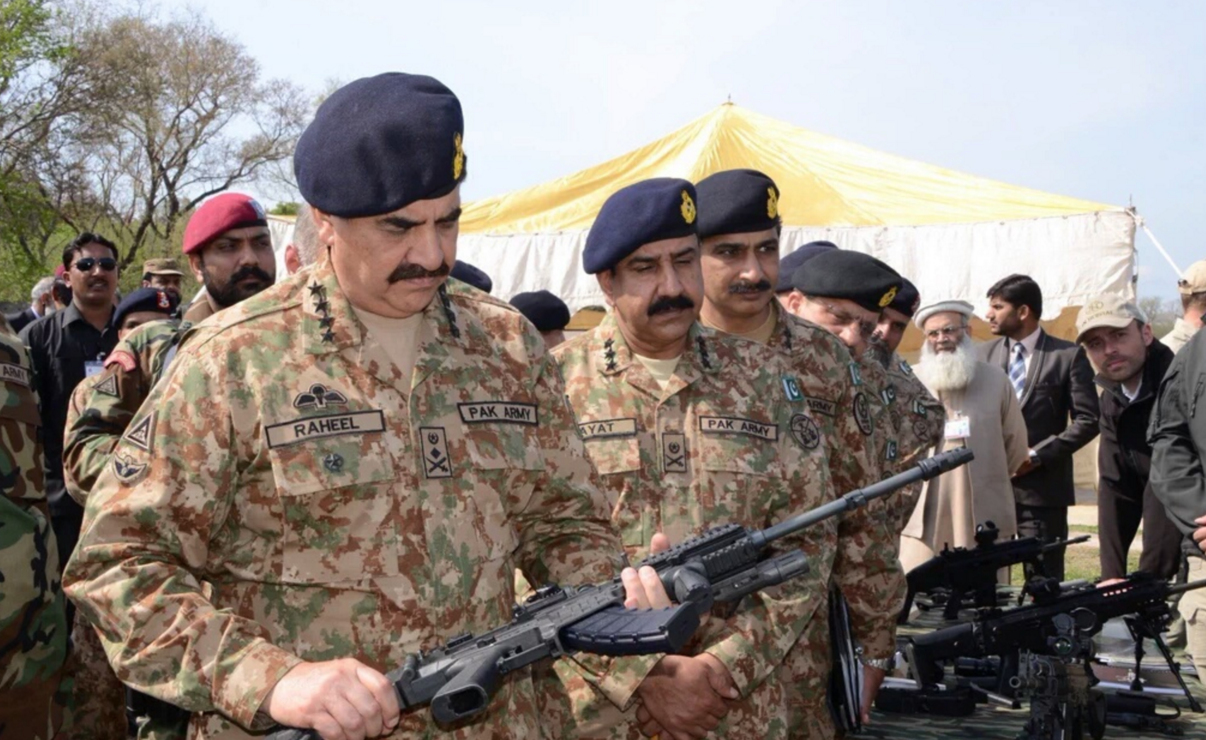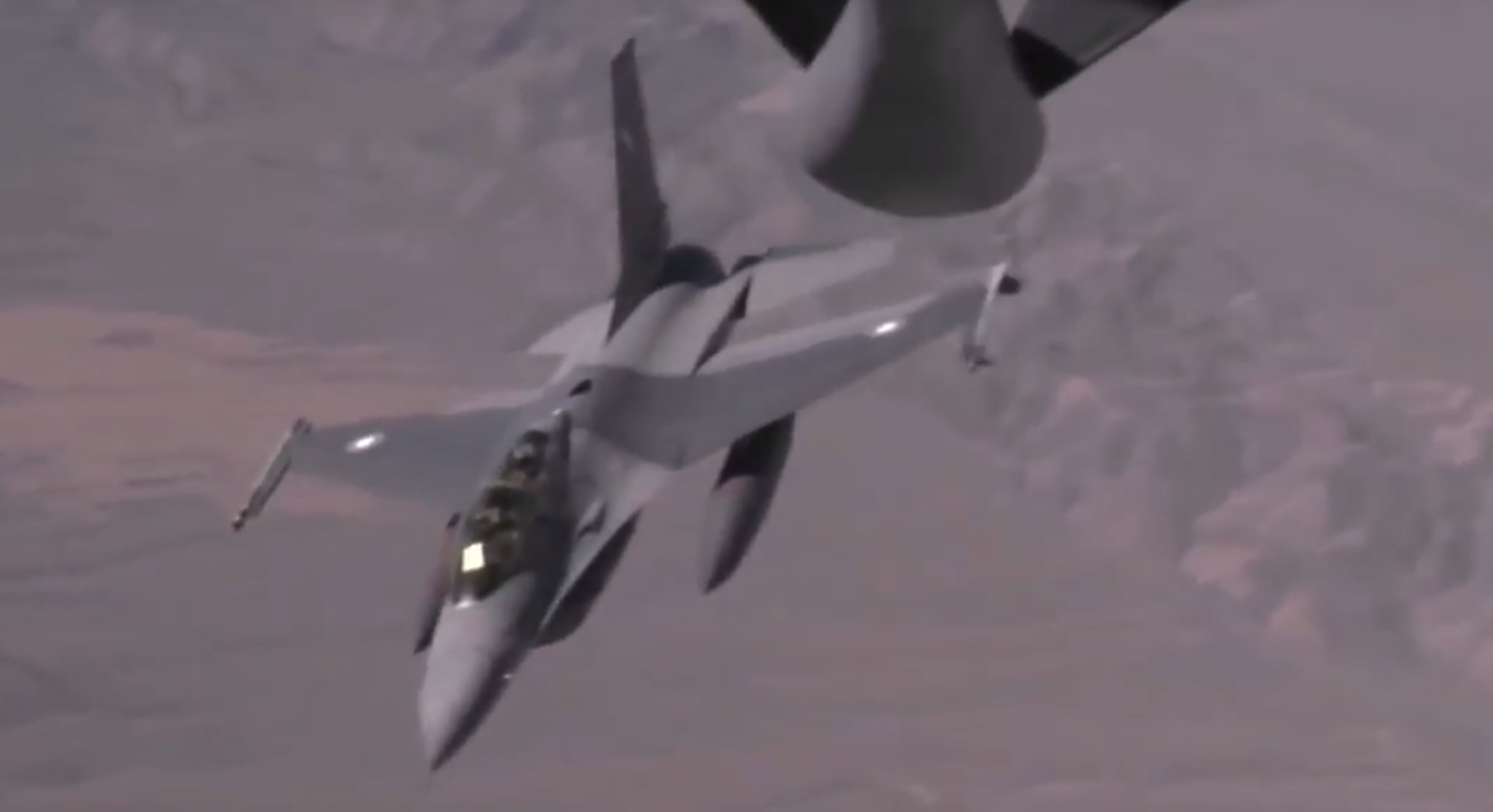2372Views 10Comments

Discussion: A look at Russia’s MiG-35 pitch
Foreword: This is not a news story, but a piece for discussion. The details offered in this article are not authoritative pieces of information, but rather, perspectives of the author.
On the launch of the Mikoyan MiG-35, United Aircraft Corporation (UAC), the Russian government, and the Russian armed forces leadership delivered a vocal marketing push for the new Fulcrum variant. From citing the current MiG-29 customer base to promoting Moscow’s ongoing campaign in Syria, the MiG-35 is being presented as a low-cost but high-performance option.
The centerpieces of the MiG-35 comprise of the Zhuk-AE active electronically-scanned array (AESA) radar and RD-33MK smokeless turbofan engines with full-authority digital engine control (FADEC). When the MiG-35 was under development, Mikoyan had intended to configure it with the Thales TopOwl-F helmet-mounted display and sight (HMD/S) system and Elettronica ELT/568(v2) electronic warfare (EW) and electronic countermeasures (ECM) pod from France and Italy, respectively.
It is not clear if these systems will be offered by default on the MiG-35 considering Russia’s precarious ties with Western Europe, but it is important to note that the MiG-35 was designed to accommodate custom configuration. The use of the MIL-STD-1553 serial data bus, which will enable the MiG-35 to take on commercially off-the-shelf and industry standard munitions and sub-systems, is a clear example.
There is no doubt that Moscow and UAC have the developing world in mind, and to their credit, the prospect of an AESA radar-equipped multi-role medium-weight fighter for USD $50 million or so per unit with the logistics and maintenance package is attractive. In fact, the Russian Aerospace Forces (VKS) are apparently committing to replace their ageing MiG-29s with the MiG-35, giving the platform a domestic anchor base to build scale and help with affordability.
In his statement for the event, President Vladimir Putin noted that officials from more than 30 countries were present at the MiG-35’s launch. Besides the leading candidates, such as India or the Middle East and North Africa (MENA) clients, officials from states with emergent forces, such as Bangladesh and Peru, were also present at the MiG-35 launch event. A Bangladeshi official told Russian media that the MiG-35 was among the platforms the Bangladesh Air Force would evaluate as part of its modernization plans.
Analysts, such as Nikolai Litovkin (from Russia Beyond the Headlines), noted the Russian government’s push to position the MiG-35 and Mikoyan as relevant industry players, hoping that the attention would enable the new platform to generate overseas interest and near-term sales. However, Litovkin cautioned that Mikoyan “will be unable to organize full-scale production on its own, and significant investment will be required, both from the government and customers” to make timely MiG-35 deliveries viable.
If this is an accurate assessment, then it would be pause for concern to prospective MiG-35 customers. ‘Customer investment’ means a higher unit-cost, which risks pushing the MiG-35 into an uncompetitive cost bracket. Granted, that bracket is quite high relative to the Eurofighter Typhoon, Rafale and, to an extent, the JAS-39E/F Gripen, but many in Russia’s target market are not examining the MiG-35 against Western fighters, but other Eastern alternatives, namely Chinese ones. With China beginning to clear AESA radars for export, it may not be long before the Chengdu J-10B is also offered to the market. China is also in a better position than Russia to offer financing or credit to help propel its equipment.
Large VKS orders and domestically-driven efforts to revitalize Mikoyan will be essential to the MiG-35’s success on the market. There are very few platforms that have succeeded in the market without a domestic anchor to build scale and to guarantee production over the long-term. Unfortunately, analysts are not entirely convinced that the VKS will follow through on its intent to procure many MiG-35s.
The only alternative course is to find a large buyer, such as India or a MENA state, to instigate interest in the platform. India played an essential role in driving momentum to the Sukhoi Su-30, but with the Indian Air Force (IAF) and Indian Navy (IN) heavily tilting towards Western platforms, the MiG-35 is far from securing ground in India. MENA is plausible, especially with Egypt ordering 50 MiG-29M/M2 (or MiG-35), though the Gulf Arab states (and Morocco) have issued orders to Dassault, Leonardo, BAE Systems, Boeing and Lockheed Martin. Algeria has preferred Sukhoi.
The challenges notwithstanding, the MiG-35, technically at least, is a compelling solution. Assuming that the unit-price does not stray much further from the USD $40-45 million of the MiG-29M/M2, the platform should draw considerable interest from current MiG-29 users, which have a dearth of readily available next-generation options on the market. Translating this interest into sales is another matter however, and that will depend on Russia’s fiscal strength, Mikoyan’s reliability, and China’s responsiveness on the market.



10 Comments
by Naveed AHMAD أحمد
Was any representative of Pakistan present at the ceremony? How do you see MiG-35 as one of the contenders considering Pakistan’s specific needs (for now, ignoring the other factors such as training, integration etc)? MiG 35 and Su-35 both are on Iran’s shopping list besides other big ticket item.
by Bilal Khan
To my knowledge, Pakistani officials were not present at the event. Yes, Iran could be a major boon for the MiG-35 program.
by Syed Adeel Mahmood
Mig 35 For Pakistan wont give any decisive edge to PAF against IAF. JFT block 3 are already under development with the same warfare capabilities with our own trusted platform. PAF is going towards 5th gen aircrafts as i know
by ksal00
Hi Bilal,
Very good piece. Russian platform is known for less maintenance friendly. With introduction of this new aircraft has it changed ? Another question I have is that why the big frames of aicrafts ? is it dual engine and more hard points? One of my friends in PAF said that they do not like large frame aircrafts becuase it is visible from far away and that is why PAF does not have large frames like F15/F18 (apart from price also).
Can you please shed some light on that.
thanks
by Bilal Khan
Maintenance depends on a few factors, but if you’re looking at the MiG-35, you might point to the fact that it uses two engines. Two engines are pricier to operate than one. However, it is worth noting that the RD-93 onboard the JF-17 is an early iteration of the RD-33 (used on older MiG-29 variants), which has a lower time-between-overhaul and lower fuel-efficiency. The RD-33MK aboard the MiG-35 is better on both fronts. Besides that, it’d be the durability of airframe line-replaceable units (LRU), but I don’t know how this stuff fares on the MiG-35 versus the JF-17 or any other fighter. It seems that the MiG-35 uses a lot more composites and it had switched out the hydraulics for a fully digital fly-by-wire system. I would imagine the LRUs are quite good, but if Mikoyan has trouble keeping the spare parts supply channel up-to-date and timely, this can be an issue.
As for visibility and size … I wouldn’t take such thoughts seriously. These fighters fly at fairly high altitudes, even F-15s up high look really small to the naked eye (and an F-16 quite large when low). The real issue is radar cross-section – i.e. the fighter’s detectability on radar – and newer airframes using lots of composite materials should be OK if not better on radar.
by AlFa_M.Romeo
Mig-35 have several challenge:
-Chengdu J-10C/D(CFT,powerful Chinese engine, long variety of Chinese SMArt ammunition, Real AESA RADAR, Lower Cost-Higher efficiency)
– Zhuk-AE AESA RADAR have many problems and 2 prototype equipped with anther choice(some sources Claim that Zhuk radar Use American micro prosser, and with sanctions from “USA”, built newly radar With trouble),
– Remember Indiana report from Mig29k problem, replacing western avionics component with Russian building(with lower quality) Cause many unidentified problems in long time.
– MiG-35 cost in Comparison with MiG-29M/M2, Many countries(target market specially) Prefer Buy lower cost “M” Version.
– Each County Buy MiG-35, should pay full scale production Line cost, and long time delay for delivery.
by SS_IND
Mig 35 is knife in a gun fight !! In the medium fighter category its going up against the Rafale, Eurofighter and F-18 E/F. Its never going to be a competition to these fighters which are far more advance….have already had 3-4 upgrade iterations and are major fighters for major countries.
No matter how much MIG try its just a upgrade to the MIG 29…..they even provided India the 100 new engines RD-33MK Mig 35 engines for its Mig 29 UPG and KUBs.
(https://sputniknews.com/business/201609271045760813-engines-india-supply-russia/)
And in my opinion the future for the Mig 35 as far as India is concern is going to be another upgrade to provide the Zhuk-AE (AESA Radar) which would provide MIG a good deal of money and India a 4.5 gen fighter for cheap. India pick for the medium fighter range has to be Rafael or F-18 both of which have major potential for Airforce and Navy service as well as Make in India offers.
The future buyers as the author rightly put is the developing nations top candidates would by Iran and Bangladesh….maybe some central Asian and African states as well. It is a competition for the Chinese J-10 and maybe better with its better engines and EW suits.
by Omar Dar
The Mig-35 and JF-17 might just become perfectly complimentary for each other because they share engines. This will help countries to build a fleet of twin engine and single engine fighters. So I would welcome the sales of the Mig-35.
by mazhar
No brother, PAF was/is interested in SU-35 for it’s longer ferry range. I don’t think PAF is interested in MIG-35. That’s why no one from PAF was at the ceremony.
by Superior Shakeel
one thing to note here is the unreliable russian engine the mig 29k on indian navy have really poor reliability with more than half of the planes landing on one engine and 40% of the engines have packed up maybe it is due to the excessive stress on the engines and harsh marine environment but the RD series engine is hecka unreliable so i wonder if they are any good though OTOH the land based MIG-29 UPG variant are doing just fine.
but this recent RFI by indian navy which basically means Rafale does raise some concerns regarding the reliability of the MIGs